Background: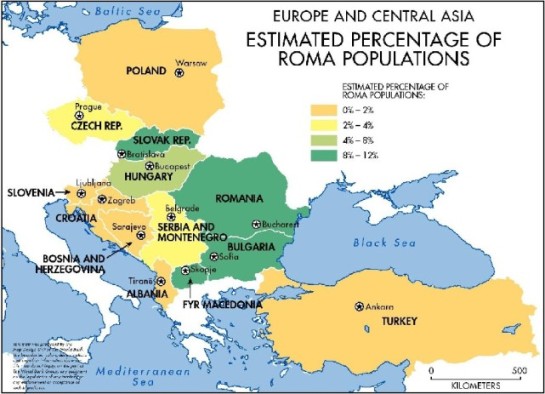
Known popularly as Gypsies, the Roma are the largest group of stateless people in the world and Europe’s largest and fastest-growing minority group. Due to the nomadic lifestyle of many Roma, it can be difficult to accurately count them, but some estimate the Roma population at 10 million worldwide, with six million in Eastern and Central Europe.
Europe's Roma have poor access to education and health services, and endure extensive discrimination. According to Mariana Lenkova, Balkan Media Researcher at Greek Helsinki Monitor, "They are blamed for everything, from the worst economic and social problems to everyday petty crimes.”
Poverty rates among Roma can run more than ten times that of non-Roma, and most live below the poverty line. The World Bank publication
Roma in an Expanding Europe: Breaking the Poverty Cycle reports that Roma poverty remains strikingly high, even in relatively well-off new EU member-states. One UNICEF study found that 78 percent of Roma in Albania and 66 percent of Roma in Romania live on less than US$4.30 a day.
Establishment of Roma media:
In the 1970s, a network of community radio and television outlets were established as Roma Media. Researchers and social activists have defined it as a vital resource to preserve Roma identity, language and culture, as well as the best tool to empower Roma communities and improve Roma representation in the mainstream media. Moreover, after the fall of Communism in the 1990s, Roma media was instrumental in influencing the way information about the ethnic community was processed.
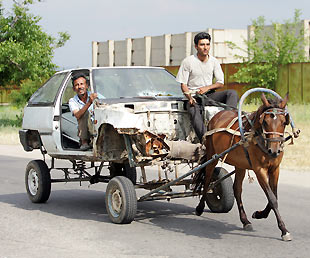
Print media are not optimal for a Roma audience because of the high rate of illiteracy among Roma communities. Print usually reaches only the Roma elite. Broadcast media, radio and television have a broader reach within the Roma population. Broadcast outlets can also provide for audience inter-activity and community participation in programming.
Untill the beginning of 1990s, only a few programs on the Roma existed, and most of them were in the former Yugoslavia. A couple of magazines were also published by Roma non-governmental organizations. Currently, there are around 25 Romani production and broadcast outlets in the field of radio and television, not including those produced by private mainstream media, and dozens of magazines published by Roma NGOs.
Projects and funders:
A number of organizations have supported Roma Media and Roma initiatives. They assist key Roma community broadcasters (radio and television) as well as news agencies and press centers in Central and Southeastern Europe. Assistance supports program development, training and infrastructure, program exchange and co-operation among Roma broadcast outlets, news agencies and press centers. The assistance has also helped improve relations and cooperation between Roma and the mainstream media.
The primary supporters of the common program for Roma media are the
Open Society Institute and
Medienhilfe. These organizations have reached an agreement for the coordination of their support by establishing a program and a common fund. Over the past ten years, these two organizations established and developed Roma media in Eastern and Southeastern Europe. The support program provides direct assistance to Roma broadcast media representing key local Roma community outlets operating in the Roma language.
Selected Case of Broadcast Media Impact:
RADIO TELEVISION NISAVA, in Serbia, was the first Roma radio station and Roma electronic media in Yugoslavia. For the first time, over 100,000 Roma within the broadcast footprint had the opportunity to experience radio and TV programs in their own language, with content devoted to their community. The station was planned to be the center of informing and emancipation of the Roma community in South and Southeast Serbia and the most important institution for cooperation and program exchange with the Roma. Its goals included:
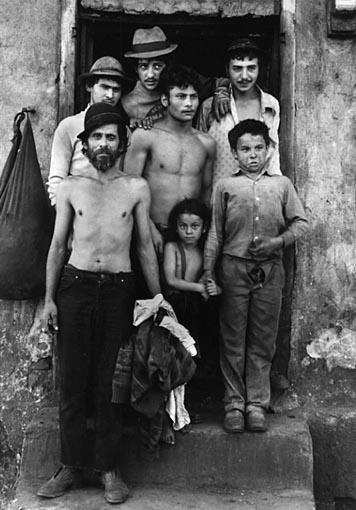
- Emancipation and integration of the Roma minority into society as a whole
- Informing the Roma minority in South and Southeast Serbia in their native language, on questions most relevant for them
- Preserving and presenting the Roma culture, tradition and language
- Overcoming stereotypes about the Roma
- Improving social position of the Roma minority in the society in general
- Promotion of a multi-ethnic society
- Strengthening the reliance between ethnic communities upon one another
- Increasing self-awareness and improving self-determination of the Roma minority
- Promotion of the multi-ethnicity with specific characteristics of the regional NGOs and Roma media from neighboring countries.
The stations claimed the following results:
- The last Census showed a 20 percent increase in citizens declaring themselves Roma in the area of coverage, compared to a 20 percent decrease on the Serbia-wide level.
- The broadcast “About Health” resulted in establishment of regular doctor visits to 200 elderly Roma on a monthly basis.
- Thanks to information provided in the broadcast “Kosovo – Our Home,” over 50 Roma IDPs submitted applications for small business grants to the Danish Refugee Council.
- Broadcasts related to Roma political participation resulted in higher number of Roma in the area of coverage taking part in elections for the National Council of Roma – 40 percent higher than in other areas.
- Broadcasts treating problems in Roma settlements pressured the local authorities to undertake measures of urban renewal (street reconstruction in “Beograd mala," a canal system in "Crvena Zvezda").
The Decade of Roma Inclusion 2005-2015
Launched in 2005, the Decade of Roma Inclusion is designed to better the lives of the Roma. Four areas for reform have been defined: education, employment, health, and housing.
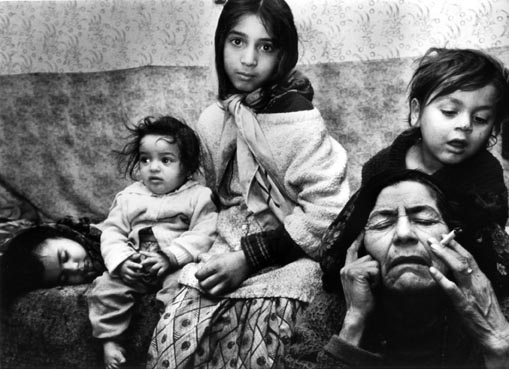
Prime ministers and other leading politicians from the participating countries pledged to put forward new policies for Roma inclusion and to allocate funding for their implementation. All of the countries involved adopted national strategies and action plans, while defining evaluative indicators. However, few tangible results have been produced so far, and public accountability towards policies for Roma inclusion is almost non-existent.
The program's goals are:
- Publicize the Decade among the Roma population
- Create a communications link between state institutions (on local and national level) and Roma
- Provide a forum for discussion of the Decade issues within Roma communities
- Offer a tool for articulation of priority needs of Roma communities
- Provide active participation of Roma communities in the Decade implementation
- Design a watch-dog for the Decade implementation
- Strengthen responsibility of Roma communities for the Decade
- Increase self-confidence and self-esteem among Roma
- Contribute to improved coverage of Roma issues in the mainstream media (co-productions, articles/productions in the mainstream media)
Roma Media Co-Production Fund 2006-2007
Launched by the Network Media Program of the Open Society Foundation and Medienhilfe in mid-2005, the Roma Media CpF's goals are:
- To strengthen co-operation between Roma and mainstream media, both nationally and internationally, in order to improve coverage of Roma in mainstream media and thereby positively impact on attitudes towards Roma inclusion.
- To reinforce the Roma media’s informative and educative role for Roma and non-Roma communities.
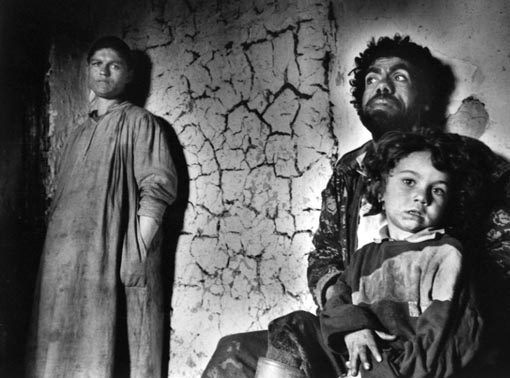
The evaluation process has offered encouraging results, suggesting that the CpF has been successful, both in terms of increased production quality and higher audience impact. Some coproductions from Macedonia, Romania and Serbia were broadcast, in some cases with several re-runs, by dozens of local, regional and national mainstream radio and TV stations. Radio coproductions reached Serbia, Macedonia and Slovenia; while TV coproductions reached viewers in Bulgaria, Hungary, Macedonia, Romania, Serbia and Slovakia.
CpF managed to bring across new, positive image of Roma to mainstream audiences. Audience feedback via telephone, SMS, and e-mail messages was mostly positive.
Radio Co-Production Projects
Radio Cerenja and Radio Stip (Macedonia) - “Information – Weapon against Exclusion”: Six radio features of 10 minutes each. Topics: The Decade of Roma Inclusion (what is it, how it is supposed to impact on people, national action plans, funds available, etc.); The Decade’s pillars of education, health, employment and housing. Two radio documentaries about Esma Redzepova of 30 minutes each. Broadcast only on Radio Cerenja and Radio Stip; total audience around 20,000.
Radio Nisava and City Radio (Serbia) - “Prejudice Is Ignorance”: Sixteen radio analysis pieces of 10 minute each; topics: Who are Roma?, Decade of Roma Inclusion, education, employment, housing, and the final program, “How much more?” Broadcast on additional 17 stations, including one with the national coverage; distributed to NGOs on e-mail lists; made available on the own website. Total audience over 500,000.
Radio Tocak and Radio Patak (Serbia) - “When I Say Roma/Gipsy, I Imagine…”: Ten radio documentaries of 8-15 minutes. Each explores one of the most widespread stereotypes about Roma, explores reasons for their existence among non-Roma, and offers facts to combat them. Broadcast only on Radio Tocak and Radio Patak; total audience around 25.000.
Radio Tocak and A-Media (Serbia) - “Do We Want This to Happen to Us?”: Twenty radio features of five minutes, each presenting one concrete example of discrimination against Roma in various sectors of social life. Victims of discrimination speak themselves, accompanied by explanations provided by experts and support given by prominent public personalities. No audience data available.
Sustainability:
Self-sustainability is difficult for any local radio station in Central or Eastern Europe, especially for a local station which focuses on a marginalized minority. However, there is an expectation, mostly among donors, that Roma media should be sustainable in the market. The Open Society Institute, the major contributor, withdrew its funding in 2006.
Currently, in Central and Southeastern Europe, Roma Radio faces increased and serious funding problems and is struggling to survive. Its obstacles include the following factors:
- The output of Roma media is not commercial and therefore not market-sustainable.
- Advertisers do not see Roma as consumers and do not advertise in Roma media.
- There are no local mechanisms for public and private funding for non-profit media projects, and Roma media are almost fully dependent on foreign grants.
- There is no legal framework that would encourage corporate funding.
- With no stable and sufficient funding for programming costs and equipment, Roma radio outlets are poorly developed and struggle at the edge of survival.
In such situations, prolonged grant decision-making procedures or delayed payment can have catastrophic consequences. The example of Radio Cerenja (Macedonia) illustrates this. Four years of successful programming development, which served as an exemplary model for community-based radios in Macedonia, were annulled by a six-month delay of donor support. Almost all staff left the organization and the information program was reduced. Its interactive education program was terminated.
Challenges:
For the Roma media to survive, legal measures may have to be taken. To help the stations, they could be exempted from license fees, their coverage area could be to increased, and they could be provided with state subsidies for programs that serve their community.
However, there seems to be little interest among donors to support Roma media. Also, Roma media face strong discrimination by advertisers and ad revenues often do not cover half of operational costs. Finally, in many donor countries, minority media are not and cannot be considered media businesses.
Conclusions:
It is getting difficult to sustain Roma media. With dwindling financial support and increased pressure from the state and their own people, Roma journalists say they are fighting a constant battle. The current trend is for these media to be taken over, merged into regional editions, or forced to close.




 Print media are not optimal for a Roma audience because of the high rate of illiteracy among Roma communities. Print usually reaches only the Roma elite. Broadcast media, radio and television have a broader reach within the Roma population. Broadcast outlets can also provide for audience inter-activity and community participation in programming.
Print media are not optimal for a Roma audience because of the high rate of illiteracy among Roma communities. Print usually reaches only the Roma elite. Broadcast media, radio and television have a broader reach within the Roma population. Broadcast outlets can also provide for audience inter-activity and community participation in programming.
 Prime ministers and other leading politicians from the participating countries pledged to put forward new policies for Roma inclusion and to allocate funding for their implementation. All of the countries involved adopted national strategies and action plans, while defining evaluative indicators. However, few tangible results have been produced so far, and public accountability towards policies for Roma inclusion is almost non-existent.
Prime ministers and other leading politicians from the participating countries pledged to put forward new policies for Roma inclusion and to allocate funding for their implementation. All of the countries involved adopted national strategies and action plans, while defining evaluative indicators. However, few tangible results have been produced so far, and public accountability towards policies for Roma inclusion is almost non-existent.
